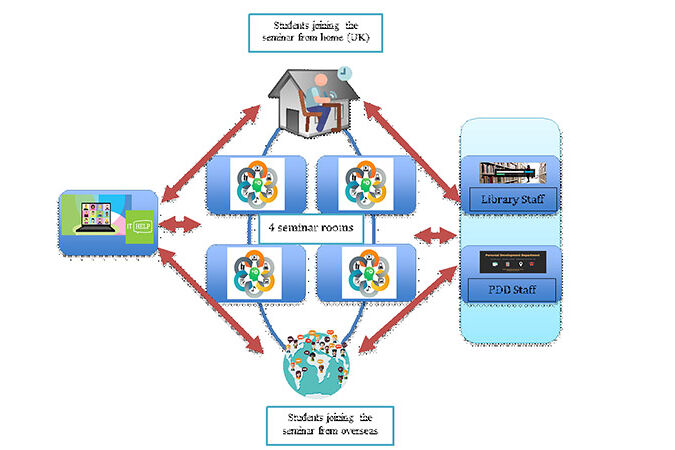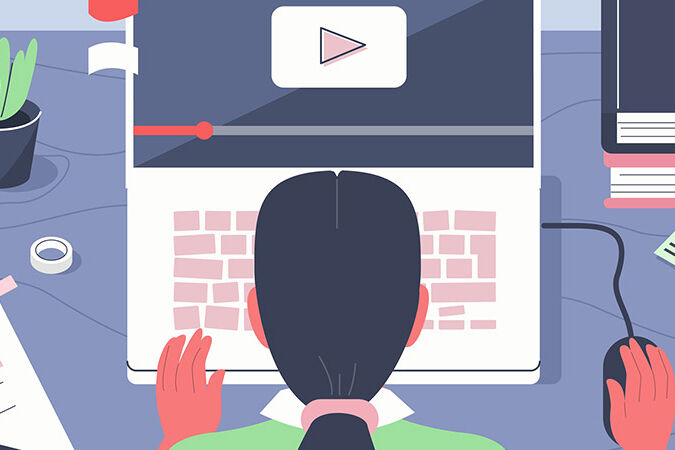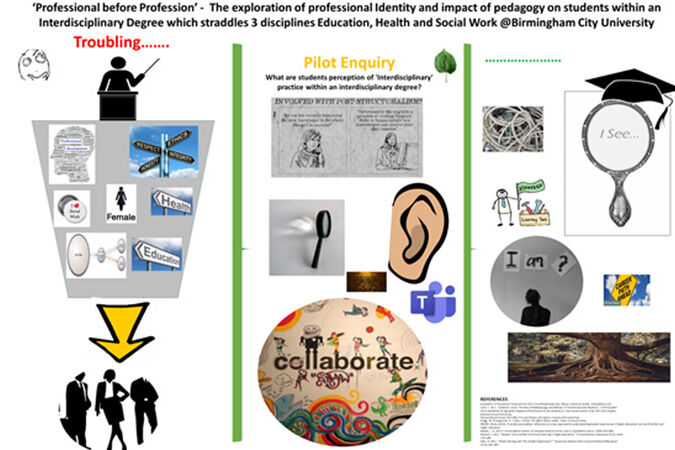The Covid-19 pandemic has brought about changes in our work/life balance at university, with which we are trying to find ways to cope. It has blurred the familiar boundaries of the working day, intruding in our private home spaces. Traditional face-to-face teaching and learning has been disrupted and the quality of interaction has suffered. However, we are nevertheless a privileged elite, as many in the population are still digitally excluded. Could more be done to rectify this? Can we imagine changes that would result in an equitable solution? Ann Nash writes.
Changes to life rhythms
The Covid-19 pandemic has brought about many changes to the rhythms of life as we knew it before 2020. Restrictions imposed on our movements and contact with other people have increased our dependency on computer technology to enable us to communicate.
In the university, as well as in other sectors that have been able to continue with remote technology, people who have not lost their jobs have seen their normal working day become longer and more onerous with the office invading previously private home spaces and blurring the traditional nine-to-five working hours.
Finding ways to adapt
In managing a very long day, some people, whose position has allowed them to, have been able to make working rules to organise and limit the intrusion of work. These can be seen on automatic email responses, in which respondents explain that they are not at work on certain days, or are part-time, or that they are busy but will respond within a certain time frame, say 48 hours. Some automated responses thoughtfully give alternative contact information in case the inquiry could be dealt with by someone else. These messages are helpful but not possible in all positions and types of work.
Quality of communication
The remote interaction of video calls and meetings is new to many people. Non-verbal communication, which makes up around 70 percent of meaning making in face-to-face communication (Hull, 2016), is greatly reduced in video calls and meetings.
As a result, the quality of teaching and learning remotely suffers. We miss human contact, and this can cause unsettling feelings of detachment and even isolation which can lead to mental health problems.
While the UK government, and governments around the world, are attempting to end lockdown measures, coronavirus variants are spreading. No one knows for how long this restricted way of life will have to continue, but it is likely that remote interaction as a way of working, in sectors privileged with technology, will continue for the foreseeable future.
Social inequalities
Covid-19 has highlighted unacceptable social inequalities. Not everyone has internet access and digital devices. Even before the pandemic, digital exclusion affected one-fifth of the UK population (Burgess, 2020). The government took steps to help disadvantaged school children and young people with laptops and data packages (DfE, 2020). However, this is a limited sector of the population. Furthermore, to claim these benefits requires navigating the system which is not easy for people who are disadvantaged to start with. In an article aimed at families on Universal Credit, a Birmingham Mail reporter made the telling remark “there are options for low-income families – you just need to know where to find them” (Chamberlain, 2021).
Could more be done?
Those of us who are fortunate to have internet connections and devices may feel beleaguered by technology but compared to many we live an elite and privileged existence. The social inequalities that leave a portion of the population marginalised and digitally excluded could be dealt with more urgently in the same way that “Nightingale” hospitals were rapidly erected (fortunately some never had to be used) and coronavirus vaccines were made available to millions in the space of a few months (BBC, 2021).
There must be some way out of here
We need to stop focussing on our pandemic situation as a problem but see it instead as an opportunity to make positive changes. The demand for university may shrink or it may grow. Ominously, famous and cherished educational institutions are already sadly having to close their doors permanently (Gordon, 2021). Perhaps this is a chance to push for the reparation of some institutional inequalities by opening up the university to more potential learners, for example, looking to strengthen and develop the relationship with pre-access programmes at further education colleges, widening the curriculum to have a broader appeal, including more fine arts, humanities, and languages.
To take an item from Biden’s proposed ‘once in a generation investment’: make two years of further education (US community college) tuition free for everyone. This would give both the advantaged and disadvantaged of all ages a place to come together and an incentive to retrain, or to find and follow their passion, or to benefit from the care of the institution, without having an expensive loan to repay afterwards (Zurcher, 2021).
References
BBC (2021) Covid-19: Nightingale hospitals to close from April [Accessed: 16 May 2021].
Burgess, G. (2020) New Horizons Programme Speech. Cambridge, UK: University of Cambridge Centre for Housing & Planning Research [Accessed: 16 May 2021].
Chamberlain, Z. (2021) How families on Universal Credit can get cheap computers. Birmingham Live Online.
DfE (2020) Get help with technology during coronavirus (Covid-19). UK.
Gordon, L. (2021) Mills College announces plan to close, triggering debate about other schools' future [Accessed 16 May 2021].
Hull, R. H. (2016) The Art of Nonverbal Communication in Practice. The Hearing Journal, 69(5).
Zurcher, A. (2021) Biden pitches 'once in a generation investment' to Congress. BBC News Online [Accessed: 16 May 2021].





